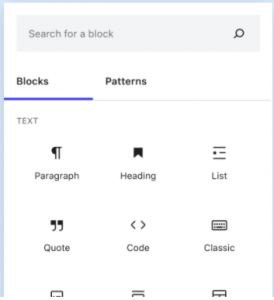“It’s Dave, not Jake.” You know that uncomfortable moment when you realize you called someone by the wrong name? We all do it, but when it happens in business, it decreases the chances of a lead ever becoming anything more. If your goal is to connect with your audience and build a relationship, you’ll have to nail so much more than a person’s name…though that’s a good place to start. This is where data comes in.
Incomplete and incorrect data accounts for many, if not most, of the problems marketers have automating campaigns. Information is one of the critical interdependencies required in the demand generation process, and because data is the fuel that helps us make critical decisions, bad data equals bad decisions.
Over the years I’ve seen a lot of databases, and 100% of them contained some level of incomplete and incorrect data. In each instance, though, we were able to identify the problems and make significant improvements to the database. How? Let’s look at three things you can do to improve your data quality starting today.
- Identify your requirements.
Where have we heard that before? Right, everywhere! Without an objective, there’s no way to know whether or not your data is right, wrong or incomplete. Make a list in the form of questions you need to pose to your database. This list should include questions like:
- What is the contact’s vertical market?
- Where is the contact located?
- Is the contact a current customer?
- How many employees work for the contact’s company?
These questions help form a foundation for what information needs to be accurately recorded in a contact’s record in order to segment and market to your database effectively.
- Determine the decision(s) you will make based on this information.
In this step, you should define how you need to record field-level information, often referred to as field standardization, based on your business’s unique needs. As you review each of the questions defined in step 1, think about what decision(s) this information will drive. For example, the data that answers the question “Where is the contact located?” could be used in a number of ways, such as:
- What sales territory is the person in for lead routing?
- Does this person fit into a location-based marketing program we’re running?
- Does his/her geography impact which products or services we would sell to them?
- What email compliance laws impact this individual, based on the requirements in various countries?
- Should our marketing messages be localized for him/her to consider cultural implications?
The answers to these queries can range from very simple to extremely complex, depending on how the decisions intersect. However, as you work through the answers to these questions, the requirements for your data, including your needs for formatting and standardization, will become clearer.
- Find the gaps.
Now that you know what decisions you need to make based on your data, you can begin to identify the holes. Data gaps always manifest themselves in one of two ways: incomplete data or incorrect data.
Incomplete data is just what it sounds like. You have critical data missing from a contact’s record, which negatively impacts your ability to market to them. For example, if your company is running a location-based marketing program targeting major metropolitan areas and you are missing a contact’s location data (city, state, postal code, etc.), you won’t be able to accurately target that individual.
Incorrect data is the case of having fields complete on a contact’s record, but the data is suspect or just plain wrong. There could be several reasons for this—people submitting faulty information, either mistakenly or intentionally, is one example—but I think the biggest factor is data decay, since databases degrade at about 22.5% per year. Contacts move, change jobs, retire and update email addresses or phone numbers all of the time, so you need to keep your data fresh to ensure accurate segmentation for marketing campaigns and to help your sales team follow up on hot leads.
Data governance and regular hygiene are the answer here. Whether it is in the form of data plugins that constantly update your database or in the form of quarterly refresh imports, your data needs a regular cleansing so it doesn’t start smelling like last week’s garbage.
Data is the missing link most often overlooked when building a demand generation strategy. To jumpstart your marketing efforts, design or redesign, your database must very specifically answer the critical questions you outlined above and work on filling in any gaps you see. Your campaign results and your sales team will thank you.
Business & Finance Articles on Business 2 Community(57)








